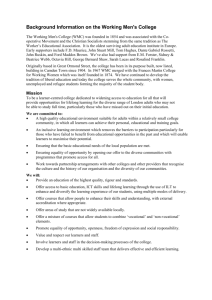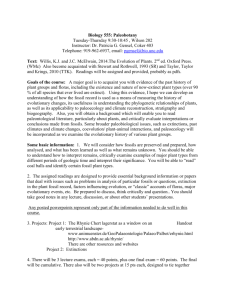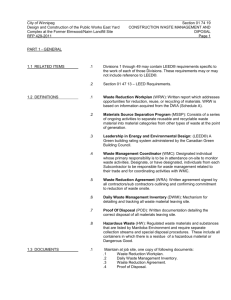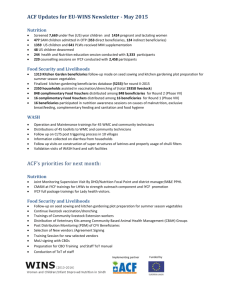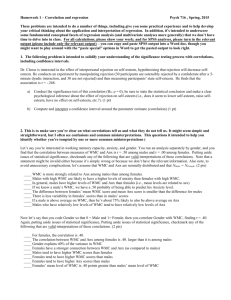For Whom the Mind Wanders, and When
advertisement
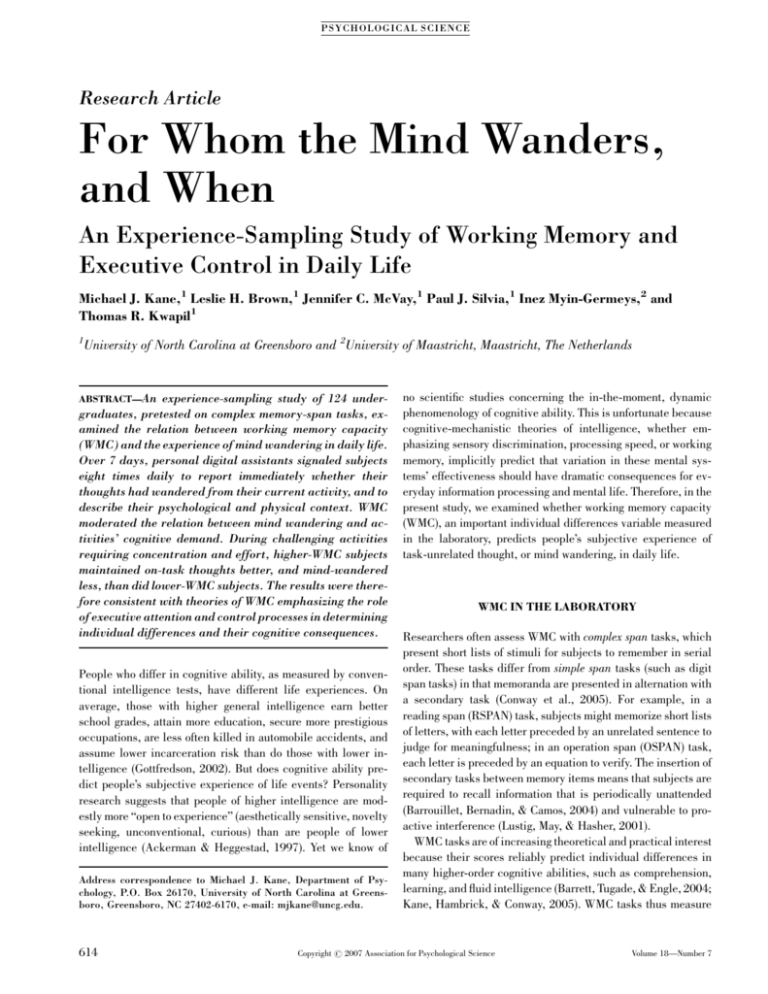
P SY CH OL OG I C AL S CIE N CE Research Article For Whom the Mind Wanders, and When An Experience-Sampling Study of Working Memory and Executive Control in Daily Life Michael J. Kane,1 Leslie H. Brown,1 Jennifer C. McVay,1 Paul J. Silvia,1 Inez Myin-Germeys,2 and Thomas R. Kwapil1 1 University of North Carolina at Greensboro and 2University of Maastricht, Maastricht, The Netherlands ABSTRACT—An experience-sampling study of 124 undergraduates, pretested on complex memory-span tasks, examined the relation between working memory capacity (WMC) and the experience of mind wandering in daily life. Over 7 days, personal digital assistants signaled subjects eight times daily to report immediately whether their thoughts had wandered from their current activity, and to describe their psychological and physical context. WMC moderated the relation between mind wandering and activities’ cognitive demand. During challenging activities requiring concentration and effort, higher-WMC subjects maintained on-task thoughts better, and mind-wandered less, than did lower-WMC subjects. The results were therefore consistent with theories of WMC emphasizing the role of executive attention and control processes in determining individual differences and their cognitive consequences. People who differ in cognitive ability, as measured by conventional intelligence tests, have different life experiences. On average, those with higher general intelligence earn better school grades, attain more education, secure more prestigious occupations, are less often killed in automobile accidents, and assume lower incarceration risk than do those with lower intelligence (Gottfredson, 2002). But does cognitive ability predict people’s subjective experience of life events? Personality research suggests that people of higher intelligence are modestly more ‘‘open to experience’’ (aesthetically sensitive, novelty seeking, unconventional, curious) than are people of lower intelligence (Ackerman & Heggestad, 1997). Yet we know of Address correspondence to Michael J. Kane, Department of Psychology, P.O. Box 26170, University of North Carolina at Greensboro, Greensboro, NC 27402-6170, e-mail: mjkane@uncg.edu. 614 no scientific studies concerning the in-the-moment, dynamic phenomenology of cognitive ability. This is unfortunate because cognitive-mechanistic theories of intelligence, whether emphasizing sensory discrimination, processing speed, or working memory, implicitly predict that variation in these mental systems’ effectiveness should have dramatic consequences for everyday information processing and mental life. Therefore, in the present study, we examined whether working memory capacity (WMC), an important individual differences variable measured in the laboratory, predicts people’s subjective experience of task-unrelated thought, or mind wandering, in daily life. WMC IN THE LABORATORY Researchers often assess WMC with complex span tasks, which present short lists of stimuli for subjects to remember in serial order. These tasks differ from simple span tasks (such as digit span tasks) in that memoranda are presented in alternation with a secondary task (Conway et al., 2005). For example, in a reading span (RSPAN) task, subjects might memorize short lists of letters, with each letter preceded by an unrelated sentence to judge for meaningfulness; in an operation span (OSPAN) task, each letter is preceded by an equation to verify. The insertion of secondary tasks between memory items means that subjects are required to recall information that is periodically unattended (Barrouillet, Bernadin, & Camos, 2004) and vulnerable to proactive interference (Lustig, May, & Hasher, 2001). WMC tasks are of increasing theoretical and practical interest because their scores reliably predict individual differences in many higher-order cognitive abilities, such as comprehension, learning, and fluid intelligence (Barrett, Tugade, & Engle, 2004; Kane, Hambrick, & Conway, 2005). WMC tasks thus measure Copyright r 2007 Association for Psychological Science Volume 18—Number 7 M.J. Kane et al. something important and general. Engle and Kane (2004) proposed that WMC task performance is influenced by many psychological processes, but its broad prediction of ability derives from domain-general executive-control mechanisms. According to their executive-attention theory, these general control mechanisms principally maintain or recover access to information (stimulus representations or goals) outside of conscious focus, and they are most important in contexts providing concurrent distraction and interference from prior experience. Indeed, people with higher WMC outperform those with lower WMC on attention tasks requiring the active maintenance of novel goals in order to override habitual responding (Kane, Bleckley, Conway, & Engle, 2001). In Stroop tasks, for example, if few trials reinforce the goal to ignore the color words and name their hues (because most words and hues match), low-WMC subjects frequently respond according to habit by reading the words (Kane & Engle, 2003). We have argued that such goal neglect reflects an inability to keep goals consistently active and accessible enough, in the moment, to control thought and behavior according to novel demands. Low-WMC subjects seem to periodically lose focus on their goals, or ‘‘zone out’’ (Schooler, Reichle, & Halpern, 2004), when executive control is challenged. WMC IN DAILY LIFE? Individual differences in WMC predict performance on formal intellectual tasks in daily life, such as the SAT (Daneman & Merikle, 1996). Such findings indicate that WMC is not merely a laboratory phenomenon. That said, as with intelligence, little is known about how psychological experiences, especially those that occur in everyday contexts, might differ depending on WMC. Experimental research suggests that individual differences in WMC predict the regulation of thought and behavior, with lower-WMC individuals being more prone to distraction and impulsive error (Kane & Engle, 2003). One might therefore predict that in everyday life, lower-WMC subjects would be more vulnerable to mind wandering than higher-WMC subjects. Then again, not all of life’s contexts demand executive control (Bargh & Ferguson, 2000). WMC should therefore predict thought flow (i.e., propensity to mind wander) primarily in life situations that replicate the laboratory requirement to sustain focused concentration on goal-directed behavior through considerable self-regulation and mental effort. By the executiveattention view of WMC (Engle & Kane, 2004), then, mind wandering—defined as thoughts or images that are not directed toward one’s current activity—would represent an occasional, but consequential, cognitive failure that people with lower WMC should be more vulnerable to than are people with higher WMC. Challenging intellectual activities are unlikely to be performed well in the absence of focused, executive attention, and so these contexts should be most diagnostic of WMC-related variation in off-task thinking. Volume 18—Number 7 EXPERIENCE-SAMPLING METHODOLOGY We examined the relation between laboratory-assessed WMC and self-reported thought focus in daily life by using the experience-sampling methodology (ESM; Csikszentmihalyi, Larson, & Prescott, 1977). ESM is a widely used, within-day assessment technique that randomly prompts subjects to complete brief questionnaires (Scollon, Kim-Prieto, & Diener, 2003). Its particular strengths are (a) multiple measurements in people’s daily environment, enhancing reliability and ecological validity; (b) reports of immediate experience, minimizing retrospective bias; and (c) assessment of contextual influences on experience. In our study, subjects were prompted to report their thoughts during their daily routines. In contrast to less constrained thought-sampling procedures in which subjects continuously verbalize or record their thoughts (e.g., Antrobus & Singer, 1964; Klinger, 1978), our procedure required subjects to answer only a few closed-ended questions about their experience and context at unpredictable times. Our method was thus similar to assessing task-unrelated thoughts during laboratory tests (Singer, 1978; Smallwood & Schooler, 2006) by periodically probing subjects to categorize their recent thoughts as being ontask or off-task. Considerable research has demonstrated the reliability and validity of probed thought reports, in and out of the laboratory. Most laboratory investigations have examined mind wandering during vigilance or reading tasks, and they have found, for example, that task-unrelated thoughts increase with slower stimulus rates, experimenter-induced anxiety, and less executivedemanding tasks (Antrobus, 1968; Grodsky & Giambra, 1990– 1991; Teasdale et al., 1995). Also, people whose thoughts wander more frequently perform their primary tasks more poorly than people whose thoughts do not wander as frequently (Schooler et al., 2004), and these individual differences in mind wandering are reliable across time and different tasks (Giambra, 1995; Grodsky & Giambra, 1990–1991) and are predicted by disorders of attention and mood (Giambra, Grodsky, Belongie, & Rosenberg, 1994–1995; Shaw & Giambra, 1993). In daily life, ESM studies have shown that 30 to 40% of reported thoughts are classifiable as mind wandering (Klinger & Cox, 1987–1988), that adolescents’ concentration improves during challenging activities in which they are skilled (e.g., Moneta & Csikszentmihalyi, 1996), and that most off-task thoughts represent subjects’ ‘‘current concerns’’ rather than fantasy (Klinger, 1978). OVERVIEW OF THE PRESENT STUDY In a novel combination of ESM and cognitive psychology methods, we tested whether an objective, laboratory assessment of WMC would predict the subjective, feral experience of mind wandering in daily life. We thus addressed a fundamental question about the nature of cognitive ability—Do people who differ in intellectual capability also differ in subjective experience?— 615 Working Memory and Mind Wandering while also investigating a strong prediction of attentional WMC theories—Do people who differ in WMC also differentially experience the disruptive effects of mind wandering in daily life, at least in cognitively demanding contexts? To answer these questions, we tested WMC in a large sample of young adults, and in an ostensibly unrelated study, we assessed their daily-life experiences of mind wandering for 1 week. Several times daily, subjects indicated whether their thoughts were focused on their current activity and answered questions about their current context. Although WMC might predict mind-wandering rates overall, given its generality, an executive-attention theory of WMC most strongly predicts that lower-WMC subjects should mind-wander more than higherWMC subjects in life situations requiring substantial cognitive control and focused concentration (Engle & Kane, 2004). METHOD Subjects Of the 394 undergraduates who completed WMC screening, 126 volunteered for the subsequent ESM study to partially fulfill a course requirement. We collected usable ESM data from 124 subjects (35 male, 88 female, 1 not identified), ages 17 through 35 years (M 5 19.34, SD 5 2.41, N 5 123); the subjects were self-identified as 67% Caucasian, 25% African American, 2% Hispanic, 3% Asian, and 3% ‘‘other.’’ WMC Screening In a 60-min session, subjects completed three complex span measures: OSPAN, RSPAN, and symmetry span (SSPAN) tasks. In these automated tasks, short lists of to-be-remembered items were presented, with each item preceded by an unrelated processing task with a response deadline (Unsworth, Heitz, Schrock, & Engle, 2005). The deadline was tailored to each task and subject on the basis of latencies (M 1 2.5 SDs) for 15 processing-only practice items. The OSPAN processing task was verifying a simple equation involving a multiplication or division and then an addition or subtraction, the RSPAN processing task was verifying whether a 10- to 15-word sentence was meaningful, and the SSPAN processing task was verifying whether a grid pattern was vertically symmetrical. For all tasks, each processing stimulus was presented until the subject responded or the deadline was reached; the memory item followed 200 ms later. Memory items appeared for 250 ms in the OSPAN and RSPAN tasks and for 650 ms in the SSPAN task; all memory items were followed immediately by the next processing stimulus or memory test. For the OSPAN and RSPAN tasks, lists consisted of 3 to 7 capitalized letters from a pool of 12; for the SSPAN task, the memoranda were the locations of two to five red squares within a 4 4 matrix. For all three tasks, three trials at each list length were presented in random order. In the memory tests for OSPAN 616 and RSPAN lists, all 12 letters were always presented in the same locations, and subjects clicked a mouse on the previously presented letters in serial order. The SSPAN tests presented an empty 4 4 matrix, and subjects clicked the previously red squares in serial order. The score for each span task was the total number of items, across trials, recalled in correct serial position (Conway et al., 2005). We created a WMC composite for each subject by converting task scores to z scores and averaging them. The correlation (r) of task scores was .65 for OSPAN and RSPAN, .52 for OSPAN and SSPAN, and .55 for RSPAN and SSPAN, resulting in a normally distributed WMC composite (skew 5 0.571; kurtosis 5 0.108). ESM Method Palm Pilot personal digital assistants (PDAs; model m100, m125, or m130) using iESP software (Barrett & Barrett, 2004; Intel Corporation, 2004) presented questionnaires and collected data via a stylus interface. A beep signaled subjects to complete eight questionnaires per day, between noon and midnight, for 7 days (plus part of the day following a training session). One signal occurred randomly during each of eight 90-min blocks; subjects had up to 5 min to initiate responding and up to 3 min to complete each question. The ESM questionnaire first asked subjects whether or not their thoughts had wandered from whatever they were doing at the time of the signal (with ‘‘yes’’ coded as 1 and ‘‘no’’ coded as 2). If so, they answered 2 questions about perceived control over their thoughts and 3 questions about thought content (all ratings made on a Likert scale from 1, not at all, to 7, very much; see Table 1). All subjects, regardless of mind wandering, answered 18 Likert-scale questions about their context (see Table 2). Subjects received training in the ESM data-collection procedure in a 60-min session. The experimenter explained and provided examples of mind wandering and emphasized that subjects should take immediate stock of their thoughts upon hearing the PDA signal, and that their responses should reflect what they had been thinking or doing immediately before the beep. Subjects completed a practice questionnaire and were TABLE 1 Questionnaire Items Pertaining to Thought Content and Control 1. At the time of the beep, my mind had wandered to something other than what I was doing. 2. I was surprised that my mind had wandered. 3. I allowed my thoughts to wander on purpose. 4. I was daydreaming or fantasizing about something. 5. I was worrying about something. 6. I was thinking about normal, everyday things. Note. Item 1 required a ‘‘yes’’ (coded as 1) or ‘‘no’’ (coded as 2) response; Items 2 through 6 were skipped if the response was ‘‘no.’’ Items 2 through 6 were answered on a scale from 1 to 7 (1 5 not at all, 4 5 moderately, 7 5 very much). Volume 18—Number 7 M.J. Kane et al. TABLE 2 Contextual Predictors of On-Task Thoughts Versus Mind-Wandering Episodes Predictor b Negative predictors: sleepiness, stress, disliked activities What I’m doing right now is boring. I would prefer to do something else right now. I feel anxious right now. Right now, there is a lot going on around me. What I’m doing right now is stressful. What I’m doing right now is related to schoolwork. I feel tired right now. Positive predictors: happiness, competence, focus, enjoyment I had been trying to concentrate on what I was doing. I like what I’m doing right now. I feel happy right now. I’m good at what I’m doing right now. Null predictors: challenging, novel, important activities; substance use [Number of alcoholic beverages since last signal] [Number of cigarettes since last signal] [Number of caffeinated beverages since last signal] What I’m doing right now is challenging. What I’m doing right now is unusual for me. It takes a lot of effort to do this activity. What I’m doing right now is important. SE t(123) prep 0.032 0.030 0.025 0.015 0.016 0.011 0.010 0.004 0.003 0.005 0.003 0.004 0.003 0.004 9.13n 9.01n 5.30n 4.71n 3.90n 3.62n 2.35n .99 .99 .99 .99 .99 .986 .927 0.060 0.034 0.019 0.010 0.006 0.004 0.005 0.005 10.59n 8.78n 4.08n 2.22n .99 .99 .99 .912 0.027 0.027 0.017 0.005 0.005 0.004 0.004 0.015 0.016 0.011 0.004 0.004 0.004 0.004 1.77 1.72 1.54 1.19 1.08 <1 <1 .842 .832 .792 .693 .656 .611 .593 Note. All predictors were questionnaire items. Except for the items pertaining to substance use (in brackets), they were answered on a 7-point scale anchored by not at all (1), moderately (4), and very much (7). The scale for substance use ranged from 0 beverages/ cigarettes (1) to 6 or more beverages/cigarettes (7). Higher scores on the dependent variable indicate more on-task thought and less mind wandering. n p < .05, prep > .875. given written instructions and laboratory contact information. ESM signal blocks began as soon as they left the session. Subjects returned on Days 2 and 4 to download data; these visits minimized data loss from defective PDAs and encouraged regular completion of the protocols. To further increase compliance, we included subjects who completed at least 70% of the ESM questionnaires in a drawing for one of two $100 gift cards. Statistical Analyses ESM data have a hierarchical structure in which questionnaire responses (Level 1 data) are nested within participants (Level 2 data), and so they are best analyzed with multilevel or hierarchical linear modeling (e.g., Nezlek, 2001; Schwartz & Stone, 1998). We focused our analyses primarily on the cross-level interactions of the relations between Level 1 ESM variables (mind wandering and its contextual correlates) and the Level 2 variable (WMC). Cross-level interactions indicate that withinperson associations at Level 1 vary as a function of the Level 2 variable. For example, the relation between mind wandering and boredom (both Level 1, within-person variables) might change as a function of WMC (a Level 2, between-persons variable), with higher-WMC subjects staying mentally on task regardless of boredom and lower-WMC subjects mind-wandering more with increasing boredom. We evaluated cross-level interactions Volume 18—Number 7 by estimating the effect of WMC on the within-person Level 1 slopes, using the equation b1 5 g10 1 g11(WMC) 1 m1, where g10 is the mean of the Level 1 slope, g11 is the effect of WMC, and m1 is the error term. In addition, we computed the intercept of the Level 2 analyses using the formula b0 5 g00 1 g01(WMC) 1 m0, where g00 is the mean value of the Level 1 dependent measure, g01 is the effect of WMC, and m0 is the error term. The g01 coefficient provides information comparable to that of the unstandardized regression weight of the Level 2 predictor (WMC) on the Level 1 dependent variable. In all analyses, we group-centered the Level 1 ESM predictors (i.e., high or low values on any variable, such as boredom, were relative to each subject’s own scores) and grand-mean-centered the Level 2 scores for WMC (Luke, 2004; Paccagnella, 2006); as in simple regression, dependent variables were not centered. Some data departed from normality, so we calculated parameter estimates using robust standard errors (Hox, 2002). For nullhypothesis tests, we used an alpha of .05; we converted p values to prep (the probability of replicating an effect’s direction given similar methods; Killeen, 2005). RESULTS AND DISCUSSION Subjects completed an average of 43.5 (SD 5 9.5, range 5 20– 60) usable ESM questionnaires; completion rate did not correlate 617 Working Memory and Mind Wandering significantly with mind-wandering rate, r(124) 5 .05, or WMC, r(124) 5 .14, although the weak correlation with WMC may be replicable (prep 5 .80). Rate and Phenomenology of Mind Wandering The rate of mind wandering was consistent with that found in prior work. Subjects reported mind-wandering at almost one third of the signals (mean rate 5 .30), but there was considerable variation around that mean (SD 5 .17, range 5 .00–.92). On occasions when subjects reported off-task thought, they generally expressed little surprise that their mind had wandered (M 5 2.40, SD 5 0.96) and indicated that they had mentally disengaged on purpose (M 5 3.99, SD 5 1.18).1 Their off-task thoughts focused most on everyday things (M 5 4.34, SD 5 1.02), significantly less on fantasies (M 5 3.77, SD 5 1.18), t(122) 5 3.86, prep .99, and still less on worries (M 5 3.14, SD 5 1.12), t(122) 5 4.26, prep .99. Mind wandering about typical events and plans was thus a common experience (Klinger, 1978), but its frequency varied widely among subjects. Contextual Predictors of Mind Wandering We first analyzed whether self-reported mind wandering was systematically associated with particular contexts. As depicted in Table 2, subjects’ thoughts wandered more when they were tired or stressed, when they were in stimulating-to-chaotic environments, and when they were involved in boring or unpleasant activities (including schoolwork). Subjects’ minds wandered less when they felt happy and competent, when they concentrated, and when they were involved in enjoyable activities. The importance, novelty, or challenge of activities, however, did not significantly predict mind wandering (nor did recent use of caffeine, cigarettes, or alcohol, although the prep values for these weak effects suggest replicability). Most of these findings are not surprising, but they support the validity of subjects’ ESM responses. Indeed, the fact that not all our intuitions were confirmed (e.g., challenging or important activities did not discourage mind wandering) suggests that responses were not determined by folk theories or demand characteristics. Mind Wandering and WMC As expected, laboratory-assessed WMC was unrelated to the overall rate of on-task thoughts versus mind wandering in daily life, averaged across all contexts, b 5 0.024, SE 5 0.022, t(122) 5 1.22. Analyses of cross-level interactions therefore tested whether WMC affected the within-person relation between mind wandering and any contextual (Level 1) variables, particularly those that mirrored laboratory contexts in which WMC predicts successful executive control. 1 Data from 123 subjects were analyzed; 1 subject never reported mind wandering. 618 The Impact of Cognitive Demand One salient feature of laboratory tasks on which lower-WMC subjects show executive-control deficits is their cognitive demand: They are challenging and require prolonged effort and concentration. Thus, our first set of multilevel analyses examined the moderating effect of WMC on the within-person relation between mind wandering and self-reported concentration, challenge of the activity, and required effort. As depicted in Figure 1a, not only did mind wandering decrease and on-task thoughts increase with self-reported concentration (see Table 2), but WMC significantly moderated this within-person association, b 5 0.022, SE 5 0.006, t(122) 5 3.98, prep .99. (All our analyses treated WMC as a continuous variable, but for ease of illustration, the figure presents the mean within-person slopes for subjects in the top and bottom WMC quartiles.) HigherWMC subjects showed a stronger relation (a steeper slope) between concentration and mind wandering than did lower-WMC subjects. At the highest levels of self-reported concentration, higher-WMC subjects were much less likely to mind-wander than were lower-WMC subjects; indeed, under extreme concentration, higher-WMC subjects’ thoughts were focused almost perfectly on the task. At the lowest levels of self-reported concentration, however, when demands were low, higher-WMC subjects were more likely to mind-wander than were lowerWMC subjects. WMC had a different moderating effect on the relations of mind wandering with both the challenge of the activity (Fig. 1b) and the effort demanded by the activity (Fig. 1c). Although neither challenge nor effort significantly predicted mind wandering overall (see Table 2), their cross-level interactions with WMC were significant: b 5 0.010, SE 5 0.005, t(122) 5 2.06, prep 5 .89, for challenge and b 5 0.010, SE 5 0.004, t(122) 5 2.20, prep 5 .91, for effort. In this case, lower-WMC subjects’ mind wandering responded more to context. Whereas higherWMC subjects’ thoughts remained steadily on task regardless of challenge or effort, lower-WMC subjects’ minds wandered more under greater challenge and effort. Thus, rather than zoning out as tasks became easier, people with lower WMC failed to control thought as tasks got harder.2 The Impact of Subjects’ Feelings About Their Activities A second salient feature of laboratory tasks on which lowerWMC subjects show executive-control deficits is their low intrinsic interest and their potential to arouse anxiety. These tasks are unfamiliar, long, and repetitive; they present impoverished stimuli; they have no obvious practical relevance; and they may be perceived as evaluative. Some subjects leave experiments with these tasks somewhat anxious; more leave bored or grouchy. 2 Although cross-level interactions involving ratings of challenge and effort were similar, these items were not redundant: Their Level 1 correlation across contexts was substantial, but imperfect, r(5369) 5 .65. Volume 18—Number 7 M.J. Kane et al. Fig. 1. The relation between mind wandering and self-reported cognitive-demand variables for individuals with low and high working memory capacity (WMC). The lines depict the means of the within-person slopes for subjects in the top and bottom quartiles of WMC scores. Values on the y-axis represent the mind-wandering dependent variable, scored on each questionnaire as either 1 (for mind wandering) or 2 (for on-task thoughts); lower values thus indicate more mind wandering. Values on the x-axis represent group-centered ratings for (a) concentration (‘‘I had been trying to concentrate on what I was doing’’), (b) challenge (‘‘What I’m doing right now is challenging’’), and (c) effort (‘‘It takes a lot of effort to do this activity’’). We therefore tested whether WMC moderated the association between mind wandering and the unimportance, unpleasantness, or stress of the task; feelings of anxiety, boredom, or unhappiness; or poor fit between the task and subjects’ ability. As shown in Table 3, WMC played no moderating role in the case of these variables. Regardless of WMC, subjects’ minds wandered more when they were bored, were stressed, were bad at their current activity, and disliked their current activity; regardless of WMC, mind wandering was independent of the current activity’s importance. Thus, WMC-related differences in mind wandering did not arise during relatively unpleasant or nonengaging moments. These null effects are important for several reasons, particularly for the light they shed on the significant interactions we reported for WMC and cognitive demand.3 First, like the null effect of WMC on mind wandering overall, they show that WMC is not systematically related to the willingness or ability to report one’s cognitive foibles; high-WMC subjects did not simply resist admitting mind wandering. Second, they demonstrate that the significant interactions involving WMC did not represent subjects’ folk theories, because beliefs about the relation between mind wandering and boredom are certainly as strong as those relating mind wandering to concentration and challenge. Third, and finally, they suggest that WMC-related differences in mind wandering and thought control were not purely motivational, for lower-WMC subjects were not more likely than higher-WMC subjects to mentally disengage from activities they found boring, unpleasant, or unimportant. Instead, individual differences in 3 No other cross-level interactions involving WMC and mind wandering were significant. Volume 18—Number 7 WMC predicted mind wandering selectively, only when life activities posed great challenges and required considerable effort and concentration. Mind Wandering and Metaconsciousness In laboratory tasks, low-WMC subjects make frequent errors that may reflect attention lapses. Such results suggest they have a deficit in metaconsciousness (Schooler, 2002), whereby they fail to realize when their thoughts drift from their primary activities. However, our ESM data showed no relation between WMC and surprise at having mind-wandered, b 5 0.001, SE 5 0.111, t(121) < 1, and surprise interacted with WMC and only one contextual predictor (‘‘there is a lot going on around me’’), so this interaction may be spurious. That said, we are not confident that ‘‘surprise’’ is the most appropriate phenomenological description of metaconscious dissociations (or the zoning-out experience), and given the very low base rate of strong ‘‘surprise’’ responses in our data, future work must investigate the relations among WMC, metaconsciousness, and mind wandering more fully. SUMMARY AND CONCLUSIONS In a unique effort to study the phenomenology of cognitive ability in everyday life, we found that individual differences in WMC, objectively measured in the laboratory, predicted people’s subjective experience of mind wandering during particular daily situations. Future research should assess how such mindwandering differences might vary with actual and perceived performance on activities. Do high-WMC people have the resources to mentally ‘‘time share’’ and still perform tasks well? Do 619 Working Memory and Mind Wandering TABLE 3 Cross-Level Interactions Involving Working Memory Capacity (WMC), Rate of Mind Wandering, and Feelings About the Current Activity Interaction WMC Mind Wandering Feeling Anxious WMC Mind Wandering Stressful Activity WMC Mind Wandering Enjoying Activity WMC Mind Wandering Boring Activity WMC Mind Wandering Doing Schoolwork WMC Mind Wandering Good at Activity WMC Mind Wandering Importance of Activity WMC Mind Wandering Feeling Happy b 0.008 0.006 0.007 0.005 0.003 0.002 0.001 0.000 SE t(122) prep 0.006 0.004 0.005 0.004 0.003 0.005 0.004 0.006 1.37 1.33 1.30 1.06 <1 <1 <1 <1 .743 .736 .724 .652 .615 .325 .203 .133 Note. All interactions listed in this table were nonsignificant, p > .15. low-WMC people mind-wander more in more challenging, effortful tasks because they are actually performing less well or because they believe they are performing less well? Subjective assessments of performance in daily life, as well as laboratory assessments of both mind wandering and objective task performance, will help answer these questions. The present study was motivated by an executive-attention theory of WMC variation (Engle & Kane, 2004), which holds that the impressive, general predictive power of WMC tasks derives from their tapping an ability to maintain access to information and goals in the face of distraction, interference, and shifts of conscious focus. People with lower WMC are less able than people with higher WMC to sustain goal-directed thought and behavior in the face of competition from environmental and mental events. Moreover, according to an executive-control theory of mind wandering (Smallwood & Schooler, 2006), offtask thoughts represent the withdrawal of executive resources from one’s ostensible primary task toward mental pursuit of other personal goals, thus leaving fewer resources for the primary task. We therefore predicted, and found, that people of lower WMC mind-wandered more than people of higher WMC when their activities required considerable effort and focused concentration: WMC predicted attention control during life’s challenges. However, WMC variation did not affect the relation between mind wandering and either the enjoyment or the importance of an activity, indicating that WMC’s effects on thought control were not merely motivational or artifactual. Although our central findings of WMC-related variation in real-world executive control are consistent with several attention-related WMC theories (Braver, Gray, & Burgess, 2007; Cowan, 2005; Lustig et al., 2001), they are not predicted by nonattentional views, for example, proposals that WMC and complex span performance reflect primarily domain-specific skills, such as reading, math, or spatial ability (e.g., MacDonald & Christiansen, 2002), or particular strategic behaviors (e.g., McNamara & Scott, 2001). WMC broadly predicts performance on attention-control tasks and the experience of attentional lapses, in the laboratory and in 620 everyday life. Our study also suggests that mind wandering is a promising phenomenon in which to examine executive control (Smallwood & Schooler, 2006), and that ESM is a promising method for examining the subjectivity of cognitive function and dysfunction—and testing cognitive theory—in ecologically valid contexts. Acknowledgments—We thank Keli Adams, Gena Barbee, Ben Cline, and Shoua Lor for assistance in data collection. REFERENCES Ackerman, P.L., & Heggestad, E.D. (1997). Intelligence, personality, and interests: Evidence for overlapping traits. Psychological Bulletin, 121, 219–245. Antrobus, J.S. (1968). Information theory and stimulus-independent thought. British Journal of Psychology, 59, 423–430. Antrobus, J.S., & Singer, J.L. (1964). Visual signal detection as a function of sequential variability of simultaneous speech. Journal of Experimental Psychology, 68, 603–610. Bargh, J.A., & Ferguson, M.J. (2000). Beyond behaviorism: On the automaticity of higher mental processes. Psychological Bulletin, 126, 925–945. Barrett, L.F., & Barrett, D.J. (2004). The Experience Sampling Program (Version 2.0) [Computer software]. Retrieved February 2004 from http://www2.bc.edu/barretli/esp/ Barrett, L.F., Tugade, M.M., & Engle, R.W. (2004). Individual differences in working memory capacity and dual-process theories of mind. Psychological Bulletin, 130, 553–573. Barrouillet, P., Bernadin, S., & Camos, V. (2004). Time constraints and resource sharing in adults’ working memory spans. Journal of Experimental Psychology: General, 133, 83–100. Braver, T.S., Gray, J.R., & Burgess, G.C. (2007). Explaining the many varieties of working memory variation: Dual mechanisms of cognitive control. In A.R.A. Conway, C. Jarrold, M.J. Kane, A. Miyake, & J. Towse (Eds.), Variation in working memory (pp. 76–106). New York: Oxford University Press. Conway, A.R.A., Kane, M.J., Bunting, M.F., Hambrick, D.Z., Wilhelm, O., & Engle, R.W. (2005). Working memory span tasks: A methodological review and user’s guide. Psychonomic Bulletin & Review, 12, 769–786. Volume 18—Number 7 M.J. Kane et al. Cowan, N. (2005). Working memory capacity. New York: Psychology Press. Csikszentmihalyi, M., Larson, R., & Prescott, S. (1977). The ecology of adolescent activity and experience. Journal of Youth and Adolescence, 6, 281–294. Daneman, M., & Merikle, P.M. (1996). Working memory and language comprehension: A meta-analysis. Psychonomic Bulletin & Review, 3, 422–433. Engle, R.W., & Kane, M.J. (2004). Executive attention, working memory capacity, and a two-factor theory of cognitive control. In B. Ross (Ed.), The psychology of learning and motivation (pp. 145–199). New York: Academic Press. Giambra, L.M. (1995). A laboratory method for investigating influences on switching attention to task-unrelated imagery and thought. Consciousness and Cognition, 4, 1–21. Giambra, L.M, Grodsky, A., Belongie, C., & Rosenberg, E.H. (1994– 1995). Depression and thought intrusions, relating thought frequency to activation and arousal. Imagination, Cognition and Personality, 14, 19–29. Gottfredson, L.S. (2002). g: Highly general and highly practical. In R.J. Sternberg & E.L. Grigorenko (Eds.), The general factor of intelligence: How general is it? (pp. 331–380). Mahwah, NJ: Erlbaum. Grodsky, A., & Giambra, L.M. (1990–1991). The consistency across vigilance and reading tasks of individual differences in the occurrence of task-unrelated and task-related images and thoughts. Imagination, Cognition and Personality, 10, 39–52. Hox, J. (2002). Multilevel analysis: Techniques and applications. Mahwah, NJ: Erlbaum. Intel Corporation. (2004). iESP [Computer software]. Retrieved April 2004 from http://seattleweb.intel-research.net/projects/ESM/iESP. html Kane, M.J., Bleckley, M.K., Conway, A.R.A., & Engle, R.W. (2001). A controlled-attention view of working-memory capacity. Journal of Experimental Psychology: General, 130, 169–183. Kane, M.J., & Engle, R.W. (2003). Working-memory capacity and the control of attention: The contributions of goal neglect, response competition, and task set to Stroop interference. Journal of Experimental Psychology: General, 132, 47–70. Kane, M.J., Hambrick, D.Z., & Conway, A.R.A. (2005). Working memory capacity and fluid intelligence are strongly related constructs: Comment on Ackerman, Beier, and Boyle (2005). Psychological Bulletin, 131, 66–71. Killeen, P.R. (2005). Replicability, confidence, and priors. Psychological Science, 16, 1009–1012. Klinger, E. (1978). Modes of normal conscious thought flow. In K.S. Pope & J.L. Singer (Eds.), The stream of consciousness (pp. 225– 258). New York: Plenum Press. Klinger, E., & Cox, W.M. (1987–1988). Dimensions of thought flow in everyday life. Imagination, Cognition and Personality, 7, 105– 128. Volume 18—Number 7 Luke, D.A. (2004). Multilevel modeling. Thousand Oaks, CA: Sage. Lustig, C., May, C.P., & Hasher, L. (2001). Working memory span and the role of proactive interference. Journal of Experimental Psychology: General, 130, 199–207. MacDonald, M.C., & Christiansen, M.H. (2002). Reassessing working memory: Comment on Just and Carpenter (1992) and Waters and Caplan (1996). Psychological Review, 109, 35–54. McNamara, D.S., & Scott, J.L. (2001). Working memory capacity and strategy use. Memory & Cognition, 29, 10–17. Moneta, G.B., & Csikszentmihalyi, M. (1996). The effect of perceived challenges and skills on the quality of subjective experience. Journal of Personality, 64, 275–310. Nezlek, J.B. (2001). Multilevel random coefficient analyses of eventand interval-contingent data in social and personality psychology research. Personality and Social Psychology Bulletin, 27, 771– 785. Paccagnella, O. (2006). Centering or not centering in multilevel models? The role of the group mean and the assessment of group effects. Evaluation Review, 30, 66–85. Schooler, J.W. (2002). Re-representing consciousness: Dissociations between experience and meta-consciousness. Trends in Cognitive Sciences, 6, 339–344. Schooler, J.W., Reichle, E.D., & Halpern, D.V. (2004). Zoning out while reading: Evidence for dissociations between experience and metaconsciousness. In D. Levin (Ed.), Thinking and seeing: Visual metacognition in adults and children (pp. 203–226). Cambridge, MA: MIT Press. Schwartz, J.E., & Stone, A.A. (1998). Strategies for analyzing ecological momentary assessment data. Health Psychology, 17, 6–16. Scollon, C.N., Kim-Prieto, C., & Diener, E. (2003). Experience sampling: Promises and pitfalls, strengths and weaknesses. Journal of Happiness Studies, 4, 5–34. Shaw, G.A., & Giambra, L.M. (1993). Task unrelated thoughts of college students diagnosed as hyperactive in childhood. Developmental Neuropsychology, 9, 17–30. Singer, J.L. (1978). Experimental studies of daydreaming and the stream of thought. In K.S. Pope & J.L. Singer (Eds.), The stream of consciousness (pp. 187–223). New York: Plenum Press. Smallwood, J.M., & Schooler, J.W. (2006). The restless mind. Psychological Bulletin, 132, 946–958. Teasdale, J.D., Dritschel, B.H., Taylor, M.J., Proctor, L., Lloyd, C.A., Nimmo-Smith, I., & Baddeley, A.D. (1995). Stimulus-independent thought depends on central executive resources. Memory & Cognition, 23, 551–559. Unsworth, N., Heitz, R.C., Schrock, J.C., & Engle, R.W. (2005). An automated version of the operation span task. Behavior Research Methods, 37, 498–505. (RECEIVED 6/29/06; REVISION ACCEPTED 9/5/06; FINAL MATERIALS RECEIVED 9/12/06) 621

